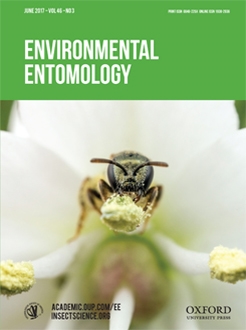Cyrtorhinus lividipennis Reuter (Hemiptera: Miridae) is an important predatory natural enemy of planthopper and leafhopper eggs in Asian rice paddy fields. Cyrtorhinus lividipennis is known to rely largely on herbivore-induced plant volatiles to identify eggs embedded in rice stem tissues for feeding and on pheromones for mating. However, exactly how C. lividipennis decode these chemical information is unclear. In most insects, the odorant-binding proteins (OBPs) and the chemosensory proteins (CSPs) are essential for seeking out food resources and mates. In this study, we identified 10 OBP and 5 CSP genes in C. lividipennis and investigated their expression patterns in various tissues of adult males and females by quantitative real-time PCR (qRT-PCR). Six OBP genes (ClivOBP1, 2, 4, 6, 9, and 10) were mainly expressed in the male antennae, whereas three genes (ClivOBP3, ClivOBP7, and ClivOBP8) had high expression in the female antennae. ClivCSP1 was predominantly expressed in the male antennae. These findings suggest that most ClivOBPs and ClivCSPs are likely involved in food-searching behavior. The recognition of the pheromone molecules provides the basis for further functional studies on the chemoreception system of C. lividipennis.
How to translate text using browser tools
12 April 2017
Identification of Candidate Odorant-Binding Protein and Chemosensory Protein Genes in Cyrtorhinus lividipennis (Hemiptera: Miridae), a Key Predator of the Rice Planthoppers in Asia
Gui-Yao Wang,
Mu-Fei Zhu,
Yan-Dong Jiang,
Wen-Wu Zhou,
Su Liu,
Kong Luen Heong,
Jiaan Cheng,
Zeng-Rong Zhu
ACCESS THE FULL ARTICLE
It is not available for individual sale.
This article is only available to subscribers.
It is not available for individual sale.
It is not available for individual sale.

Environmental Entomology
Vol. 46 • No. 3
June 2017
Vol. 46 • No. 3
June 2017
gene expression pattern
predator–prey interaction
predatory mirid




